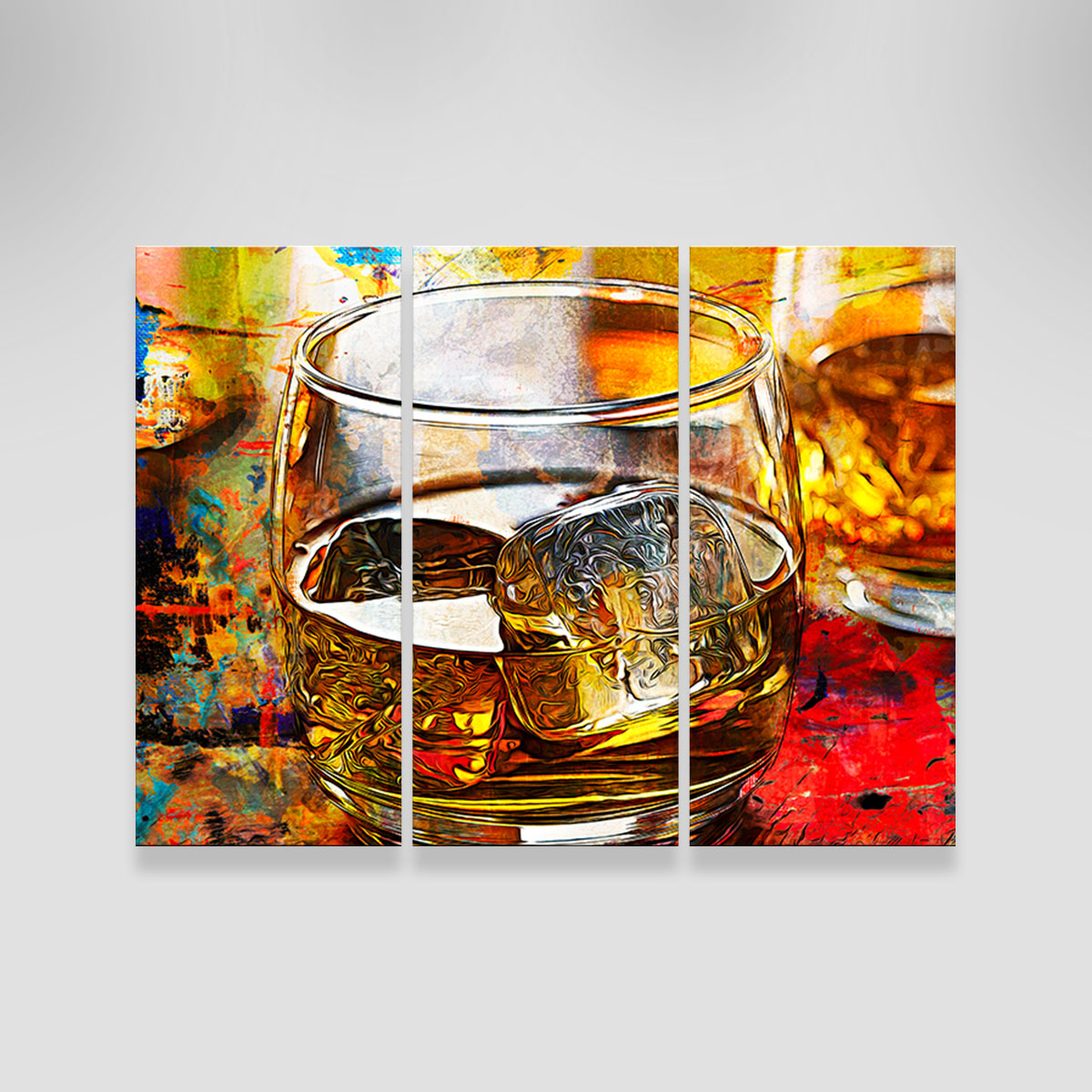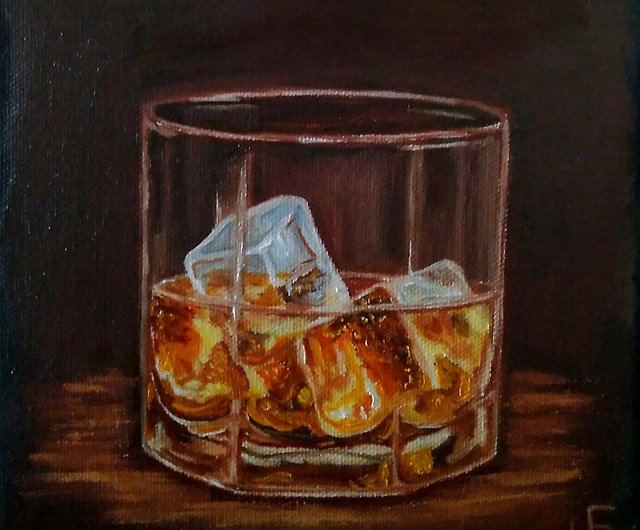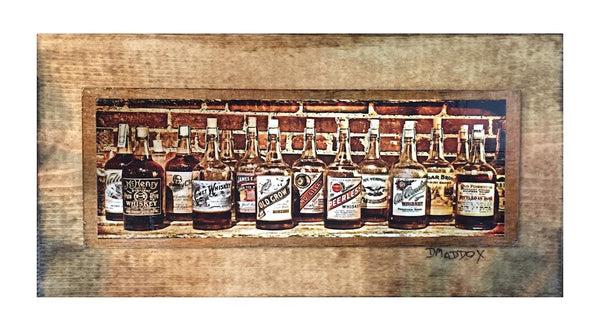Realism Art in the Whiskey Sector: Portraying Moments of Purification
Realism Art in the Whiskey Sector: Portraying Moments of Purification
Blog Article
The Significance of Whiskey Art in Celebrating Heritage and Workmanship in the Beverage Sector
The elaborate connection between whiskey art and the party of heritage and craftsmanship within the beverage sector can not be overemphasized. Via thoughtfully designed containers and tags, scotch brand names encapsulate their historical origins and the artisanal abilities that specify their production approaches. This imaginative dimension not just enhances market allure but also offers as an avenue for social storytelling, promoting a much deeper connection between the craft and the consumer. As we check out the numerous aspects of this topic, intriguing questions concerning the influence of modern-day fads on typical practices develop, prompting more evaluation.
The Historic Origins of Whiskey
At the heart of whiskey's appeal lies an abundant tapestry of historic roots that map back to old people. The origins of bourbon can be linked to the purification practices of the Sumerians and Babylonians around 2000 BCE, where very early kinds of fermented grain drinks began to arise. It was in the Middle Ages that the art of purification developed dramatically, specifically in Ireland and Scotland, leading to the production of whiskey as we recognize it today.
The term "bourbon" itself stems from the Gaelic word "uisce beatha," suggesting "water of life." This phrase emphasizes the cultural value of bourbon in Celtic cultures, where it was frequently related to rituals, parties, and public bonding. By the 15th century, purification ended up being an acknowledged craft within monastic neighborhoods, paving the way for the facility of legal distilleries.
As trade routes expanded, scotch's popularity expanded, going beyond local limits and catching the interest of aficionados worldwide. Realism Art. This historical journey reflects not just the craftsmanship behind bourbon manufacturing but likewise its important role in social and social contexts, noting it as a substantial drink throughout history
Artistic Expression in Branding
Scotch branding stands as a compelling crossway of creativity and commerce, where visual identification plays a vital role fit customer assumption. The aesthetics of whiskey labels, packaging, and marketing products reflect not just the brand name's tale yet likewise its core worths and heritage. Via creative expression, distilleries communicate a story that reverberates with customers, evoking feelings and stimulating connections.
Using color, typography, and imagery in branding serves to set apart items in a saturated market. As an example, typical concepts may evoke a sense of authenticity and craftsmanship, while modern designs can symbolize development and forward-thinking. This critical imaginative direction improves brand name recognition and commitment, enabling consumers to create a personal partnership with the bourbon they select.
Additionally, imaginative expression in branding typically functions as a party of local heritage. Distilleries frequently include regional signs or historic recommendations right into their styles, developing a local color that invites consumers to take part in a more comprehensive cultural experience. Ultimately, the virtuosity behind scotch branding not just boosts visual appeal however likewise enriches the general narrative of the brand, fostering a much deeper recognition for the craftsmanship and heritage embedded in each bottle.
Craftsmanship in Container Style
The virtuosity evident in scotch branding expands beyond aesthetic identity to encompass the workmanship associated with container design. Each bottle serves as a vessel not just for the spirit within, yet likewise for the story it informs regarding its origin, tradition, and top quality. The layout procedure calls for precise interest to detail, as aspects such as material, shape, and closure contribute significantly to the general assumption of the bourbon.
Craftsmanship in bottle layout includes selecting top notch glass that can improve the whiskey's color and quality, while also giving a responsive experience for the customer. The shape of the container need to be both useful and visually appealing, typically mirroring the heritage of the brand. Lots of distilleries choose for one-of-a-kind forms or printed logos that evoke a feeling of authenticity and background.
Furthermore, the label style and typography play an important function in communicating the brand's narrative. Realism Art. A well-crafted container not just captivates the consumer's eye however additionally enhances the brand name's commitment to high quality and tradition. By doing this, the additional resources workmanship of container layout becomes a vital facet of the whiskey experience, merging virtuosity with a profound respect for heritage
Cultural Importance of Scotch Art
Commemorating custom and craftsmanship, the cultural significance of scotch art goes beyond simple aesthetics, linking with the social and historic stories of the regions where it originates. Each container works as a canvas, showing the unique tales, mythology, and practices that have formed local whiskey-making practices. The elaborate styles commonly mirror the heritage of the distillers, integrating icons and themes that reverberate with the society and values of their communities.

In addition, scotch art plays an important role in public events and celebrations, acting as a concrete link between individuals and their shared experiences. By valuing the artistry in bourbon product packaging, consumers grow a deeper understanding and regard for the craft, inevitably enhancing their satisfaction of the drink itself.
Modern Trends in Bourbon Presentation
In current years, the discussion of whiskey has advanced to mirror contemporary tastes and trends while still recognizing traditional workmanship - Realism Art. Distilleries are progressively concentrating on aesthetic aspects that enhance the overall alcohol consumption experience, linking the space in between heritage and modernity
Cutting-edge bottle layouts have actually arised, commonly incorporating lasting products and imaginative labels that tell compelling tales. Several brands currently team up with regional artists, infusing their items with one-of-a-kind visual expressions that reverberate with consumers. Furthermore, limited-edition launches are commonly packaged in collectible containers, including value and allure for lovers.

Verdict
In verdict, scotch art functions as a crucial channel for revealing the heritage and craftsmanship intrinsic in the beverage industry. Via intricate branding, ingenious bottle styles, and culturally considerable creative elements, bourbon brands successfully honor their customs and link with consumers. This artistic story not just elevates the admiration of bourbon however also enhances area identification and pride among producers. Inevitably, bourbon art plays a crucial function in preserving and commemorating the rich social tapestry of whiskey-making.


Craftsmanship in container style includes selecting premium glass that can enhance the whiskey's color and quality, while additionally supplying a tactile experience for the consumer. In this see way, the craftsmanship of container design ends up being a crucial element of the bourbon experience, combining artistry with a profound regard for heritage.
In verdict, whiskey art serves as a vital conduit for revealing the heritage and workmanship intrinsic in the beverage industry.
Report this page